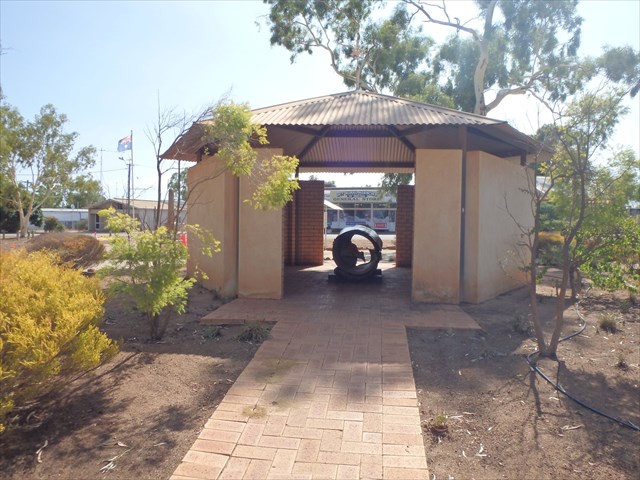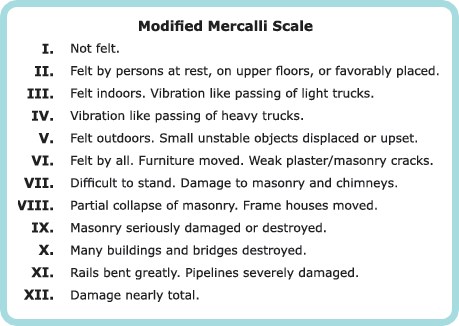
GEOLOGY OF THE MECKERING AREA
Meckering township, 130km from Perth on the Great Eastern Highway, is the centre of an important wheat-growing area. It lies near the western edge of the Yilgarn Block, the largest area of Archaean rocks in Australia. The South West Seismic Zone is a major intraplate earthquake zone located within the Archaean Shield. The Archaean Shield consists largely of granites and gneisses with the dominant structure outlined by greenstone belts. The Meckering area lies almost entirely in granite.
The Meckering Earthquake was located in a well-documented zone of seismic activity which is about 60km wide and extends across the southwest corner of Western Australia. The Meckering Fault was the first tectonic ground breakage to be recorded in Australia.
This location of the faulting at Meckering, in an otherwise stable Precambrian Shield, has shown that damaging earthquakes are a continuing potential hazard in Western Australia.
SEISMIC FORESHOCKS TO THE EARTHQUAKE
On 31st August 1968, people standing in the Meckering Golf Club house felt a solid bump and saw a small whitish cloud mushroom up ... a kilometre away.
About a month later, on 29th September, between 3pm and 7pm, three strong shocks were felt a few kilometres to the northwest of Meckering, but were not appreciable in the town.
The main event was preceded by three shocks on 3rd October, between 11.03am and 11.55am. The third tremor was the largest, with ML 4.2, and this was felt most strongly in the township of Meckering.
On the day of the main earthquake some people in Meckering felt distinct tremors at 1am and 7.15am. Despite the frequency of these tremors little damage had been caused and there appeared to be no reason why the local people should expect a major earthquake.
However, at 10.59am on 14th October, 1968, the small town of Meckering was destroyed by an earthquake. Of about 230 people in town and a further 300 people on farms only 20 people were injured and no-one was killed.
EARTHQUAKE EFFECTS OUTSIDE THE MECKERING AREA
The earthquake lasted for 40 seconds. Earth tremors were felt in all the major centres of the southern half of Western Australia including Geraldton, Kalgoorlie, Esperance, Albany and Perth. Although this area has a radius of about 700km, significant damage was confined to an area in an 80km radius of Meckering including York, Northam and the Perth metropolitan area.
The earthquake was felt for about 24 seconds in the Perth metropolitan area, although some tall buildings vibrated for as long as 3 minutes.
The earthquake and its aftershocks were accompanied by surface faulting extending over an area of 200km2 and a thrust fault 37km long was formed. Undulating ground waves up to 3m high were recorded.
As a result of this earthquake improvements in earthquake engineering were developed. The building codes and various structural issues for Western Australia were also modified.
MEASURING THE EARTHQUAKE
Many instruments are used to record earthquakes. They include the Richter Scale, Mercalli Scale, seismograph, seismogram and seismometers.
The Richter Scale assigns a magnitude number (ML) to quantify the energy released by an earthquake. The magnitude of the Meckering earthquake measured on the Richter Scale made it one of the largest recorded in the seismic history of Australia.
The effect of an earthquake on the Earth's surface is called the intensity. The Modified Mercalli Intensity Scale is composed of increasing levels of intensity that range from imperceptible shaking to catastrophic destruction. The levels are designated by Roman numerals.

The intensity scale value assigned to a specific site after an earthquake has a more meaningful measure of severity to the nonscientist than the magnitude because intensity refers to the effects actually experienced at that place.
The lower numbers of the intensity scale generally deal with the manner in which the earthquake is felt by people. The higher numbers of the scale are based on observed structural damage.
Remember to take only photos and leave no trace of your visit. We hope you enjoy your visit to this geologically interesting area in Western Australia - and think about those 40 seconds that shook this town.
In order to get your smiley you may log this Earthcache straight away but then please email your answers to the questions to the CO. We will contact you ONLY if your answers need extra work. Logs with no answers sent will be deleted. Please do not post your answers in your log.
Q1. What was the magnitude of the Meckering earthquake on the Richter Scale?
Q2. By information and observation at GZ and the reference point determine which number on the Mercalli Scale you think would be assigned to the Meckering earthquake.
Q3. Through research what is the difference between a seismograph and a seismogram?